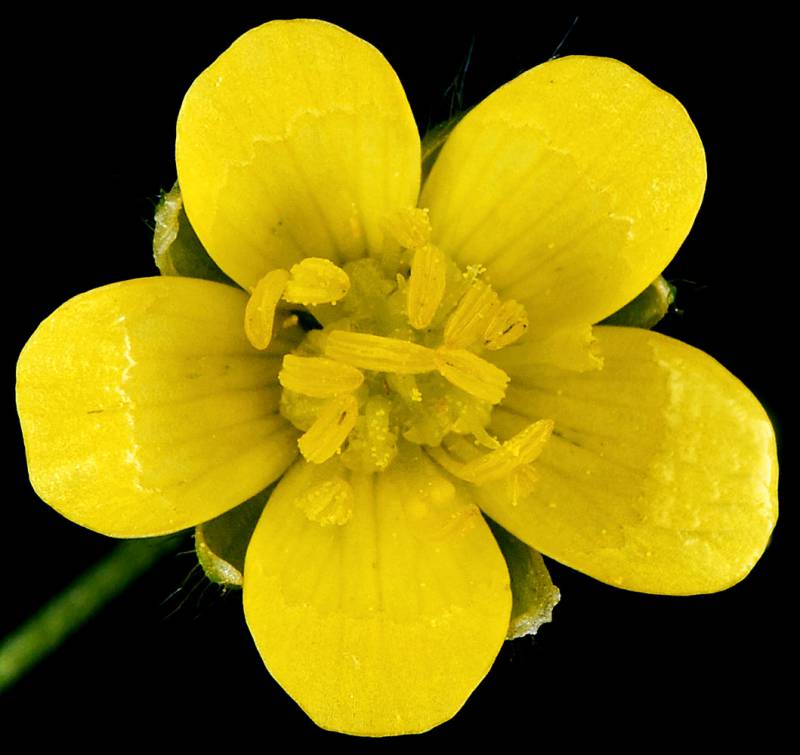Ranunculus arvensis
field buttercup, hungerweed
Basal leaves oblanceolate, 3-toothed to twice ternately divided into linear lobes;
cauline leaves alternate, tri- or bi-ternately divided into linear segments.
Flowers solitary on slender pedicels 3-5 cm. long;
sepals 5, spreading, membranous, yellowish, 3.5-6 mm. long, hairy;
petals 5, yellow, 5-8 mm. long, obovate;
receptacle hemispheric, hairy;
nectary basal on and nearly as broad as the petal, free to the base;
stamens about 10;
pistils 5-8 in a globose cluster.
Achenes greatly compressed, nearly circular, with many spines; stylar beak stout, straight, 3 mm. long.
Ranunculus arvensis
Occurring east of the Cascades crest in Washington; British Columbia to California, east to Idaho and Utah; also in areas of central and eastern U.S.
- Local floras:
BC,
CA,
OR,
WA
- Local Web sites:
CalFlora,
CalPhotos,
Flora NW,
PNW Herbaria
WildflowerSearch
iNaturalist (observations)
USDA Plants Database
- LBJ Wildflower Center
- SEINet
- Plants of the World Online
- Encyclopedia of Life
- Wikipedia
- Google Image Search


